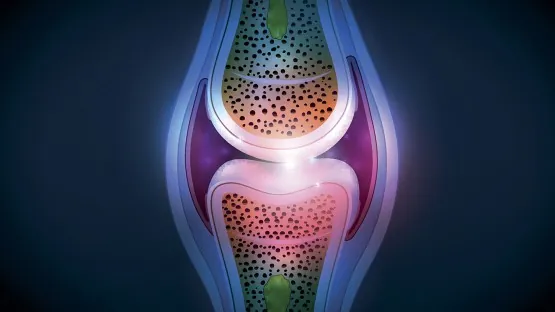
Unlocking the Secrets of ACL Injuries: How Our Dogs Hold the Key!
2025-04-18
Author: Daniel
A Surprising Ally in ACL Research
Did you know that man's best friend might help revolutionize treatments for anterior cruciate ligament (ACL) injuries? New groundbreaking research from Cornell University suggests that insights gained from studying ACL injuries in dogs can provide significant advances for human medicine.
The Power of Periostin: A Protein to Watch
Published on April 18 in the Journal of Orthopedic Research, this study found that both dogs and humans exhibit the buildup of a specific protein called periostin in their joints after an ACL injury. This vital finding emphasizes that dogs can serve as an effective model for studying the complex post-traumatic osteoarthritis (PTOA) that often follows these injuries.
Sydney Womack, a first author and veterinary medicine Ph.D. candidate at Cornell, passionately states, "Dogs are as close to mimicking human lifestyles as we can get. They're an incredible, untapped resource for advancing our understanding of joint injuries."
Why Some Suffer More: A Mystery Unraveled?
ACL injuries, particularly prevalent among young athletes—especially females—can lead to PTOA earlier in life, yet the variation in recovery and severity remains a puzzle. Current treatments focus on symptom relief but do not halt disease progression.
Fascinating Findings: From Dogs to Humans and Back Again
Heidi Reesink, a senior author of the study, shares the excitement of finding similar results between species, stating, "It's rare to see consistent results like this across different species, which aids in our comparative studies." Using joint fluid samples from dog patients at the Cornell University Hospital for Animals and from human subjects in New York, the researchers observed that a whopping 60% of the proteins found were shared across both.
Accelerating Progress in Research
The shorter lifespan of dogs may significantly accelerate research into PTOA. Womack believes that studying dogs allows for monitoring disease progression within a decade, a timeframe much longer for humans due to their lifespans and the challenge of obtaining healthy tissue samples.
Periostin's Potential: A Gateway to New Treatments?
Womack is delving deeper into the role of periostin, exploring its potential as a therapeutic target or biomarker that may indicate a person's risk of developing PTOA. The findings suggest that while periostin aids in initial healing, its chronic buildup could lead to increased inflammation and joint degeneration.
Broader Implications for Health
Reesink adds that periostin's ties to heart diseases and cancers in humans open up new avenues for targeting this protein in various conditions. The researchers' goal is to understand periostin's role in joint diseases and to discover shared therapeutic options across species.
A Collaborative Effort
This innovative study involved contributions from experts across various institutions, emphasizing its far-reaching implications for veterinary and human medicine alike. It highlights the potential for interdisciplinary collaboration to tackle such complex health issues.
The Future Looks Promising
As research progresses, the canine model may not only shed light on ACL injuries but also serve as a beacon of hope for improving health and treatment strategies for both dogs and humans alike. Who knew your furry friend held the key to solving some of our medical mysteries?
 Brasil (PT)
Brasil (PT)
 Canada (EN)
Canada (EN)
 Chile (ES)
Chile (ES)
 Česko (CS)
Česko (CS)
 대한민국 (KO)
대한민국 (KO)
 España (ES)
España (ES)
 France (FR)
France (FR)
 Hong Kong (EN)
Hong Kong (EN)
 Italia (IT)
Italia (IT)
 日本 (JA)
日本 (JA)
 Magyarország (HU)
Magyarország (HU)
 Norge (NO)
Norge (NO)
 Polska (PL)
Polska (PL)
 Schweiz (DE)
Schweiz (DE)
 Singapore (EN)
Singapore (EN)
 Sverige (SV)
Sverige (SV)
 Suomi (FI)
Suomi (FI)
 Türkiye (TR)
Türkiye (TR)
 الإمارات العربية المتحدة (AR)
الإمارات العربية المتحدة (AR)